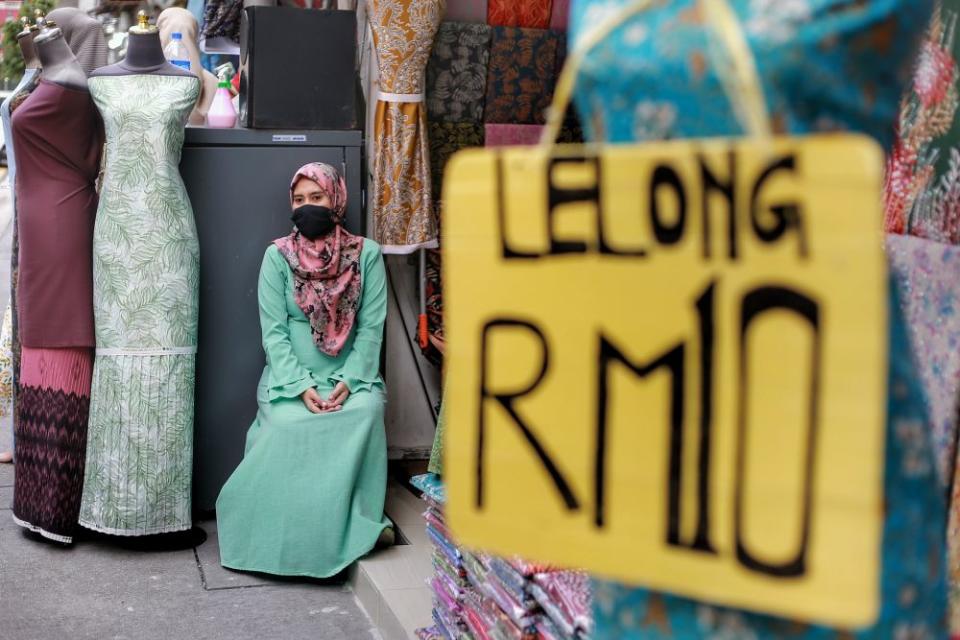To consumers, Malaysia’s CPI deflation a sign of pandemic hardship

KUALA LUMPUR, May 26 — To economists, the sharp plunge in April’s consumer price index was hardly a surprise. The nation was under a partial lockdown for that entire month; businesses shut down and demand plunged.
But consumers saw the deflation as a telling sign of something far more ominous.
Jobs and livelihoods were destroyed and people had no income to spend. What it illustrates is the extent of damage wrought by Covid-19, the respiratory disease that has claimed over a quarter million lives worldwide and pushed economies into recession.
The Federation of Malaysian Consumers Associations (Fomca), for one, opined that the CPI nosedived to a record low because unemployment skyrocketed.
The partial lockdown enforced in mid-March and for the entire April had effectively paralysed businesses, resulting in massive closures and layoffs and evaporating up to billions of ringgit in disposable income.
“Due to this, the demands have gone down for housing and transport, which resulted in their prices being pushed lower,” Datuk Paul Selvaraj, the group’s chief executive officer, said in an interview with Malay Mail recently.
“Even though prices go down, which is a good thing for consumers, they still could not afford to buy as they had lost their income.”
The government has projected unemployment to rise between 3.5 per cent and 5.5 per cent this year, a much higher rate than during the 1997 Asian Financial Crisis.
The Department of Statistics Malaysia (DOSM) said earlier this month unemployment in March rose by 17.1 per cent year-on-year to 610,000 people to push the jobless rate to 3.9 per cent, from just over 1 per cent previously.
But non-official estimates suggest the number of jobs culled could be much higher if taking into account the informal sector, which employs roughly a third of the country’s 15 million workforce.
Economists like Muhammed Abdul Khalid, the former economic adviser to the country’s seventh prime minister, had estimated the retrenchment figures could be as high as 16 per cent just in April alone, although leaders from the ruling coalition are likely to contest his calculation.
But whether or not the unemployment rate could have significantly influenced the drop in consumer prices is not absolutely clear.
Economists like Tan Sri Kamal Saleh, head of the Malaysian Institute of Economic Research, a state-linked think tank, said many factors could have caused the deflation, since movement restrictions enforced in mid-March and throughout April had effectively brought all economic activity to a halt.
“It was to be expected,” he said in a phone interview.
“There was lower consumption, lower demand, no supply constraint and people are just not spending or traveling. Naturally prices go down.”
April’s consumer price index declined to a record low of 2.9 per cent to 117.6, with housing and transport accounting for the biggest drop as most people stayed at home throughout the six-week long movement control order (MCO).
Non-essential businesses and travel were barred during this period.
Bar food items and non-alcoholic beverages and communication bills, prices for all items in the CPI basket posted sharp declines. For food, the Malaysian Industrial Development Finance (MIDF) attributed the rise in prices to stockpiling during the six-week lockdown that started on March 18.
MIDF said the deflation, at -2.9 year-on-year, was far lower than market forecast of -1.5 per cent.
The weak economic data has fueled talk of deflation. Economists said this should prompt vigilance among policymakers, whose response to the Covid-19 fallout has received both flak and praise.
“What we need to look out for is deflationary signs but we can’t tell now, maybe after the second quarter,” said Kamal.
“The government needs to think of the long-term recovery and I don’t see them injecting a fresh stimulus since they’ve reopened the economy and the infection rate is under control,” he added.
“But things look like they’re bottoming out and recovering.”
Related Articles Fomca saran moratorium sehingga Disember Fomca: Extend loan repayment moratorium to December MIDF maintains ‘buy’ call on Wesports


